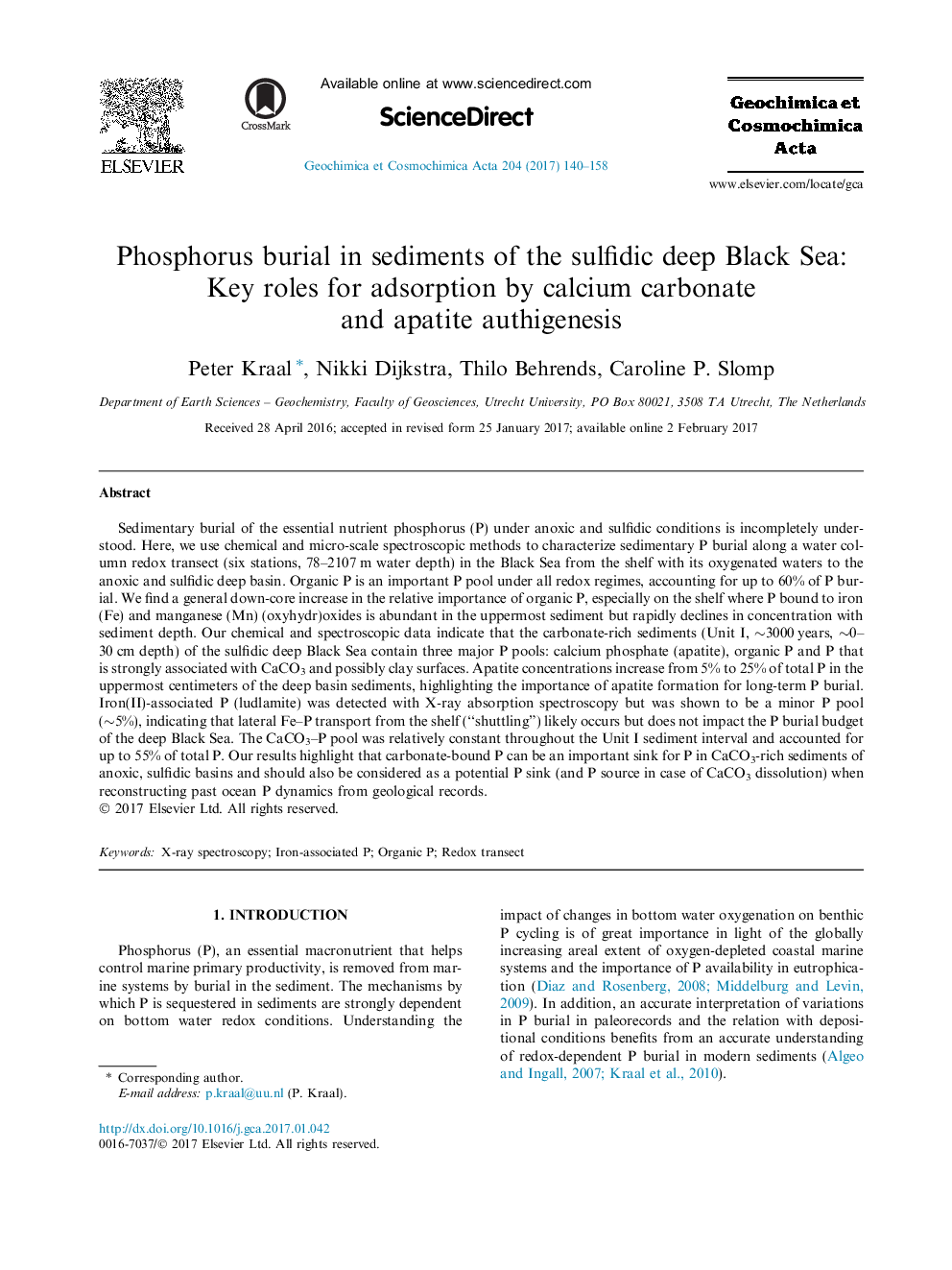| کد مقاله | کد نشریه | سال انتشار | مقاله انگلیسی | نسخه تمام متن |
|---|---|---|---|---|
| 5783543 | 1637953 | 2017 | 19 صفحه PDF | دانلود رایگان |
Sedimentary burial of the essential nutrient phosphorus (P) under anoxic and sulfidic conditions is incompletely understood. Here, we use chemical and micro-scale spectroscopic methods to characterize sedimentary P burial along a water column redox transect (six stations, 78-2107Â m water depth) in the Black Sea from the shelf with its oxygenated waters to the anoxic and sulfidic deep basin. Organic P is an important P pool under all redox regimes, accounting for up to 60% of P burial. We find a general down-core increase in the relative importance of organic P, especially on the shelf where P bound to iron (Fe) and manganese (Mn) (oxyhydr)oxides is abundant in the uppermost sediment but rapidly declines in concentration with sediment depth. Our chemical and spectroscopic data indicate that the carbonate-rich sediments (Unit I, â¼3000Â years, â¼0-30Â cm depth) of the sulfidic deep Black Sea contain three major P pools: calcium phosphate (apatite), organic P and P that is strongly associated with CaCO3 and possibly clay surfaces. Apatite concentrations increase from 5% to 25% of total P in the uppermost centimeters of the deep basin sediments, highlighting the importance of apatite formation for long-term P burial. Iron(II)-associated P (ludlamite) was detected with X-ray absorption spectroscopy but was shown to be a minor P pool (â¼5%), indicating that lateral Fe-P transport from the shelf (“shuttling”) likely occurs but does not impact the P burial budget of the deep Black Sea. The CaCO3-P pool was relatively constant throughout the Unit I sediment interval and accounted for up to 55% of total P. Our results highlight that carbonate-bound P can be an important sink for P in CaCO3-rich sediments of anoxic, sulfidic basins and should also be considered as a potential P sink (and P source in case of CaCO3 dissolution) when reconstructing past ocean P dynamics from geological records.
Journal: Geochimica et Cosmochimica Acta - Volume 204, 1 May 2017, Pages 140-158
